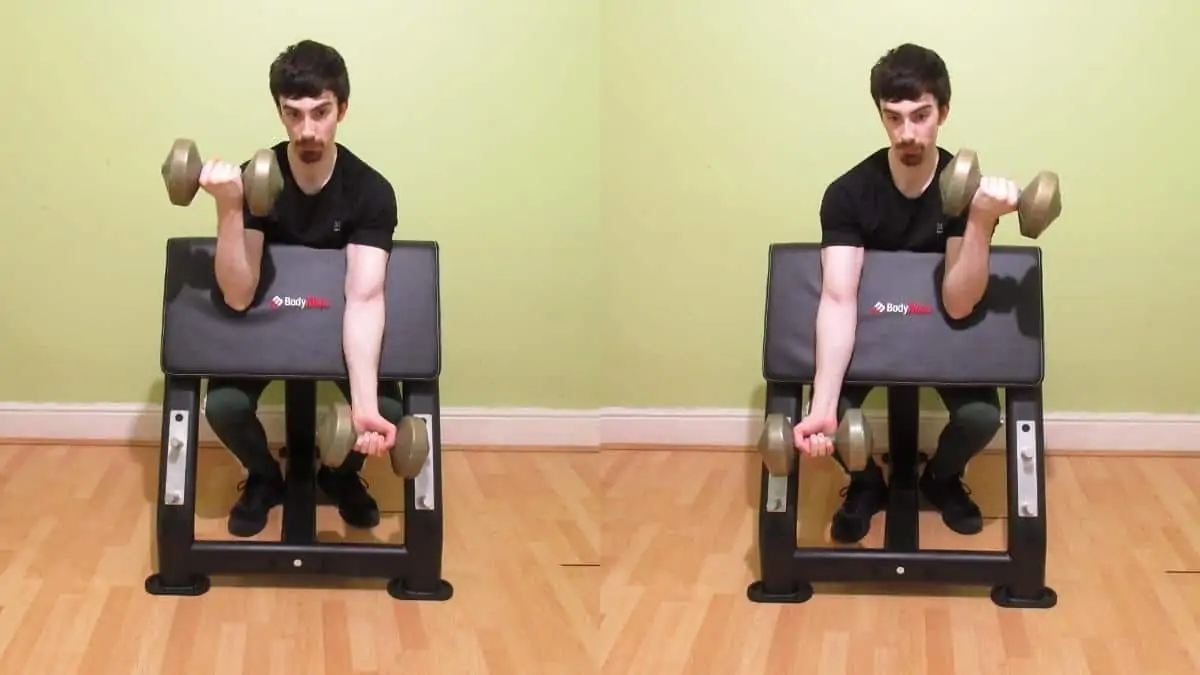Due to the biceps brachii origin at the scapula (short head) and the shoulder (long head), the biceps is a long arm muscle that requires exercises performed both in front and behind the body for optimal development.
Doing preacher curls for your biceps will help to improve the size of your upper arms by keeping the tension on the target muscles. This is because the preacher pad makes it difficult to cheat the weight up, which means that your biceps have to do the heavy lifting.
This guide explains how to do alternating preacher curls as well as the main mistakes that you need to avoid in order to get the best results from your efforts.
Alternate dumbbell preacher curl exercise details
- Main Muscles: Biceps brachii
- Secondary Muscles: Brachioradialis, brachialis, forearm flexors
- Exercise Type: Strength
- Exercise Mechanics: Isolation
- Difficulty Level: Intermediate
- Equipment Needed: Preacher curl bench, dumbbells.
How to do alternating preacher curls
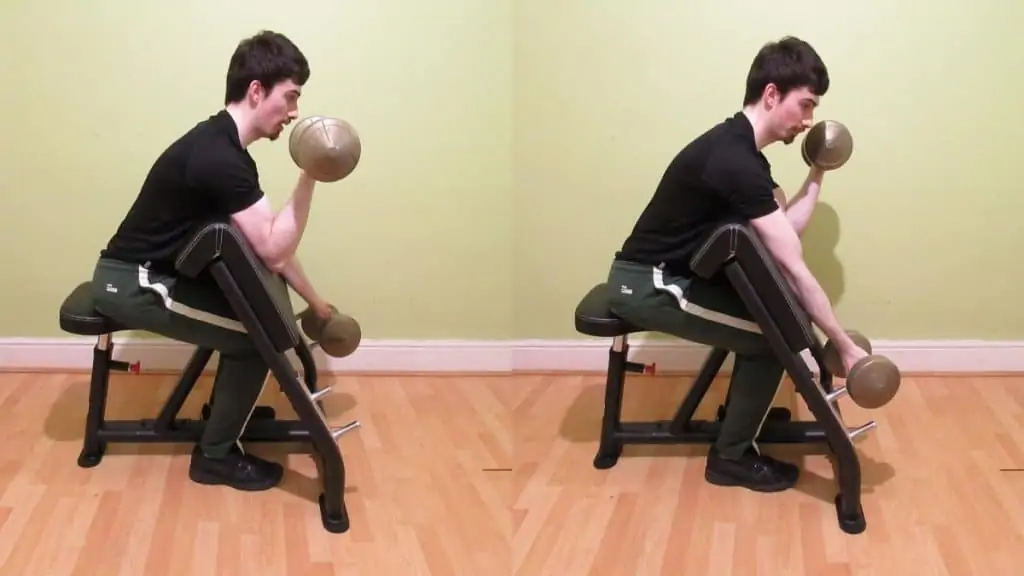
- Hold two dumbbells with an underhand grip.
- Sit on the preacher curl seat.
- Rest your arms against the sloped side of the pad. The very top of the padding should be under your armpits.
- Curl one of the weights toward your shoulders and contract your bicep forcefully.
- As you lower that weight down for a full elbow extension, curl the other dumbbell toward your shoulders and squeeze your bicep.
- Lower the second dumbbell and repeat the alternating motion once again.
- Perform 3-4 sets of 15-30 reps in total.
Alternating preacher curl mistakes
The alternate preacher curl is easier to master than the seated alternating dumbbell curl because the preacher pad helps you to lift with the correct technique. However, since you’re performing two different arm motions at the same time, it can be challenging to learn the proper form initially, hence why we’ve classified it as an intermediate exercise.
Not getting a full extension
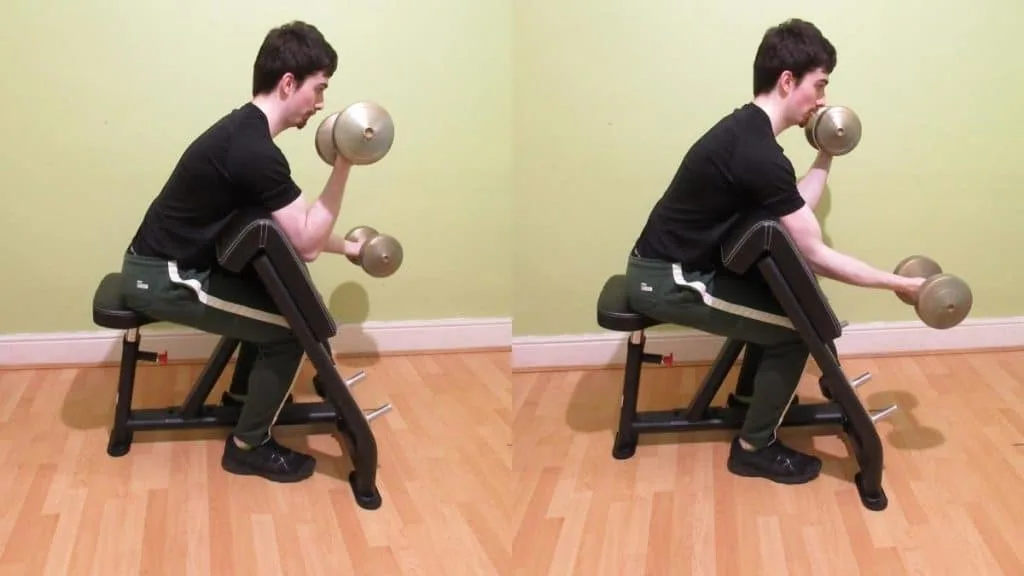
The preacher alternate curl is similar to the incline alternating dumbbell curl in that when one of your biceps is maximally contracted, the other is (or at least should be) fully lengthened. So in this sense, you’re performing two different movements within one exercise, and you’re performing them at the exact same time.
Since many people are so focused on squeezing their biceps during preacher alternating curls, they can often forget to lower the dumbbell that they just lifted all the way down. The result is that they end up performing half reps without even knowing it.
Therefore, it’s crucial that you lower the weight all the way down (until your elbow is locked out) once you’ve lifted it so that your bicep can get a good stretch.
Ideally, when one of your arms is contracted or flexed, the other should be lengthened and locked out.
Overlooking the contraction
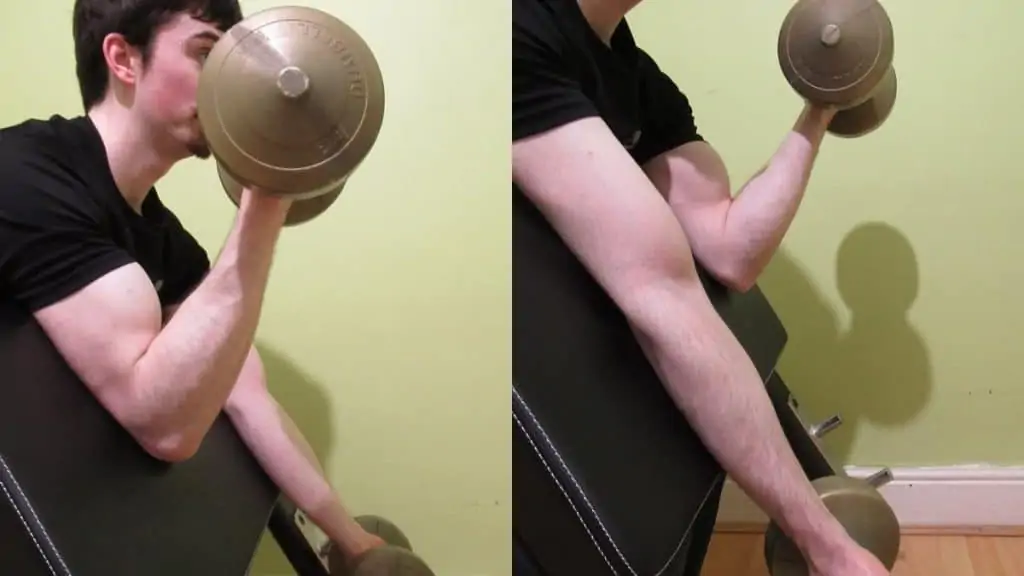
Most of the growth-stimulating muscle damage occurs on the eccentric portion of a rep, but that’s not to say that the contraction isn’t important. [1] Being able to squeeze your muscle is a sign of having a strong mind-muscle connection, which in turn will help you to achieve a more powerful muscle pump.
Focusing on getting a proper contraction also enables you to ensure that the tension is staying on the target muscles, which helps you to avoid injury by using the correct lifting technique.
There’s no need to hold the contraction for an eternity, but squeezing your biceps for 1-3 seconds during each rep can really help to improve your mind-muscle connection, which will be of benefit to you on numerous other exercises like the resistance band preacher curl.
Lifting too light
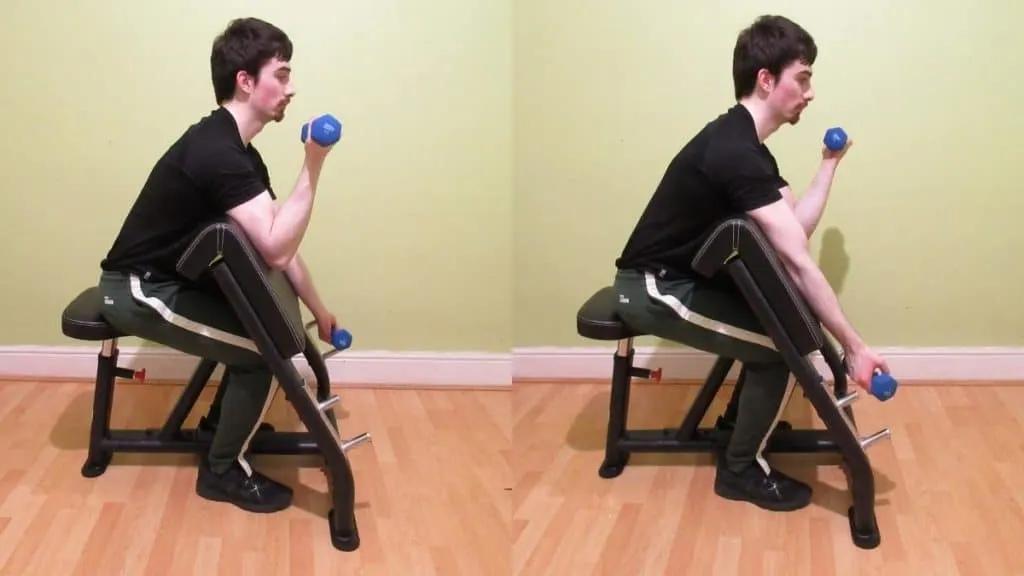
For some reason, when it comes to alternating exercises like alt hammer curls and alternate preacher curls, many lifters are blasé with regard to how much weight they lift. Rather than focus on proven muscle-building techniques like progressive overload, a lot of gym-goers tend to just go through the motions in order to get a semi-decent pump.
I suppose it’s because they see alternating preachers curls as more of an assistance exercise rather than as a mass builder. But what they fail to realize is that their muscles have no idea what these terms mean. Muscle tissue responds to tension, and by increasing the stimulus (i.e., tension) placed on it over time, you’ll naturally make it grow bigger and stronger. [2]
So if you want to get the most out of your dumbbell alternating preacher curls, then it’s recommended to train with more purposefulness. Track the amount of weight that you lift and the number of reps you perform. Then, strive to increase the resistance and/or do more reps as your biceps become accustomed to the initial starting weight.
Related Exercise: Preacher kettlebell curl
Conclusion: Should you do alternating preacher curls or stick with the regular version?

While there’s nothing wrong with alternating exercises like the standing alternate cable curl, such movements can make it difficult to use a full range of motion because you essentially have to perform two different activities at the exact same time.
If you want to maximally isolate your biceps, then your best bet is to train each arm one at a time. This way, you can make sure that each muscle is receiving equal work and thereby growing in proportion to your other bicep.
Of course, to save time, you can still train both arms together, but just not in an alternating fashion. Instead, you’d lift both dumbbells together and then lower them at the same time as well.
References
- Franchi, M. V., Reeves, N. D., & Narici, M. V. (2017). Skeletal Muscle Remodeling in Response to Eccentric vs. Concentric Loading: Morphological, Molecular, and Metabolic Adaptations. Frontiers in Physiology, 8. https://doi.org/10.3389/fphys.2017.00447
- Burd, N. A., Andrews, R. J., West, D. W., Little, J. P., Cochran, A. J., Hector, A. J., Cashaback, J. G., Gibala, M. J., Potvin, J. R., Baker, S. K., & Phillips, S. M. (2012). Muscle time under tension during resistance exercise stimulates differential muscle protein sub-fractional synthetic responses in men. The Journal of Physiology, 590(2), 351–362. https://doi.org/10.1113/jphysiol.2011.221200

